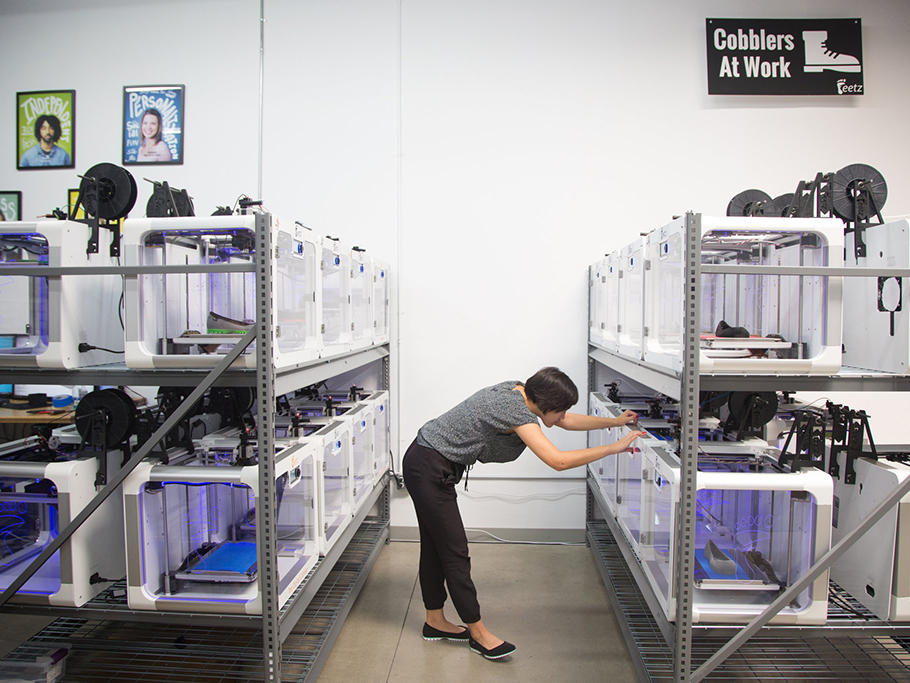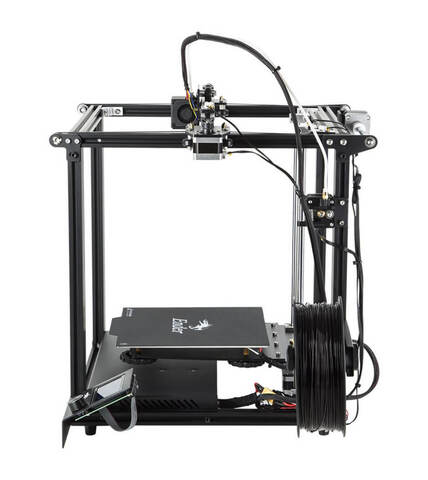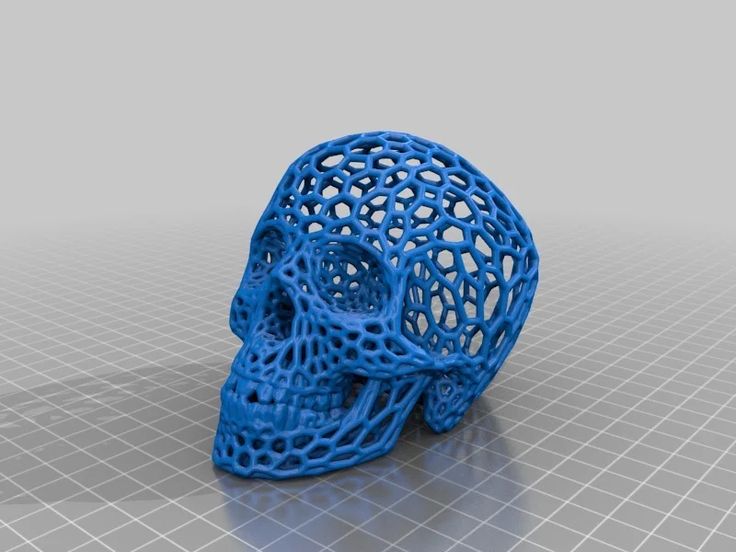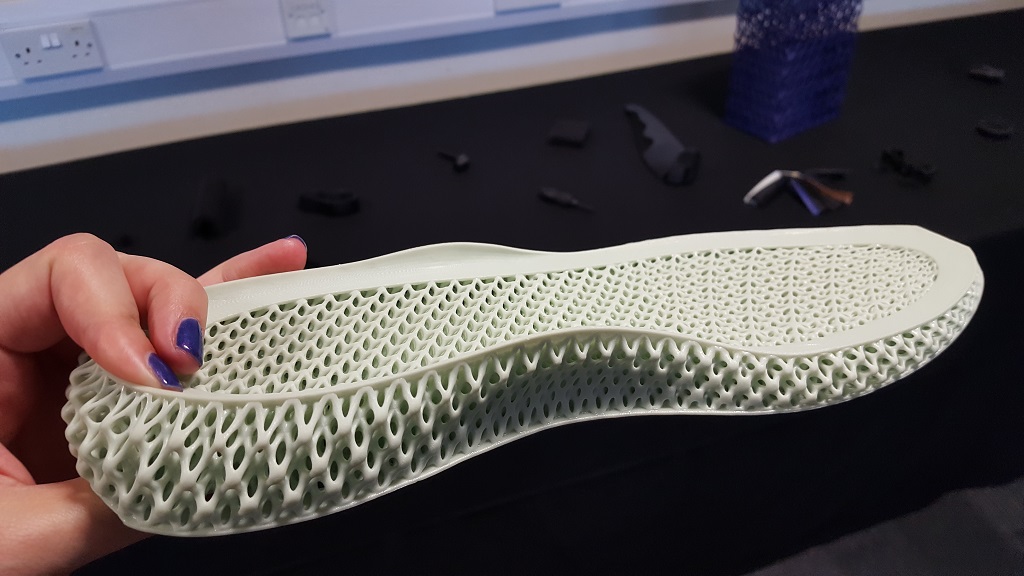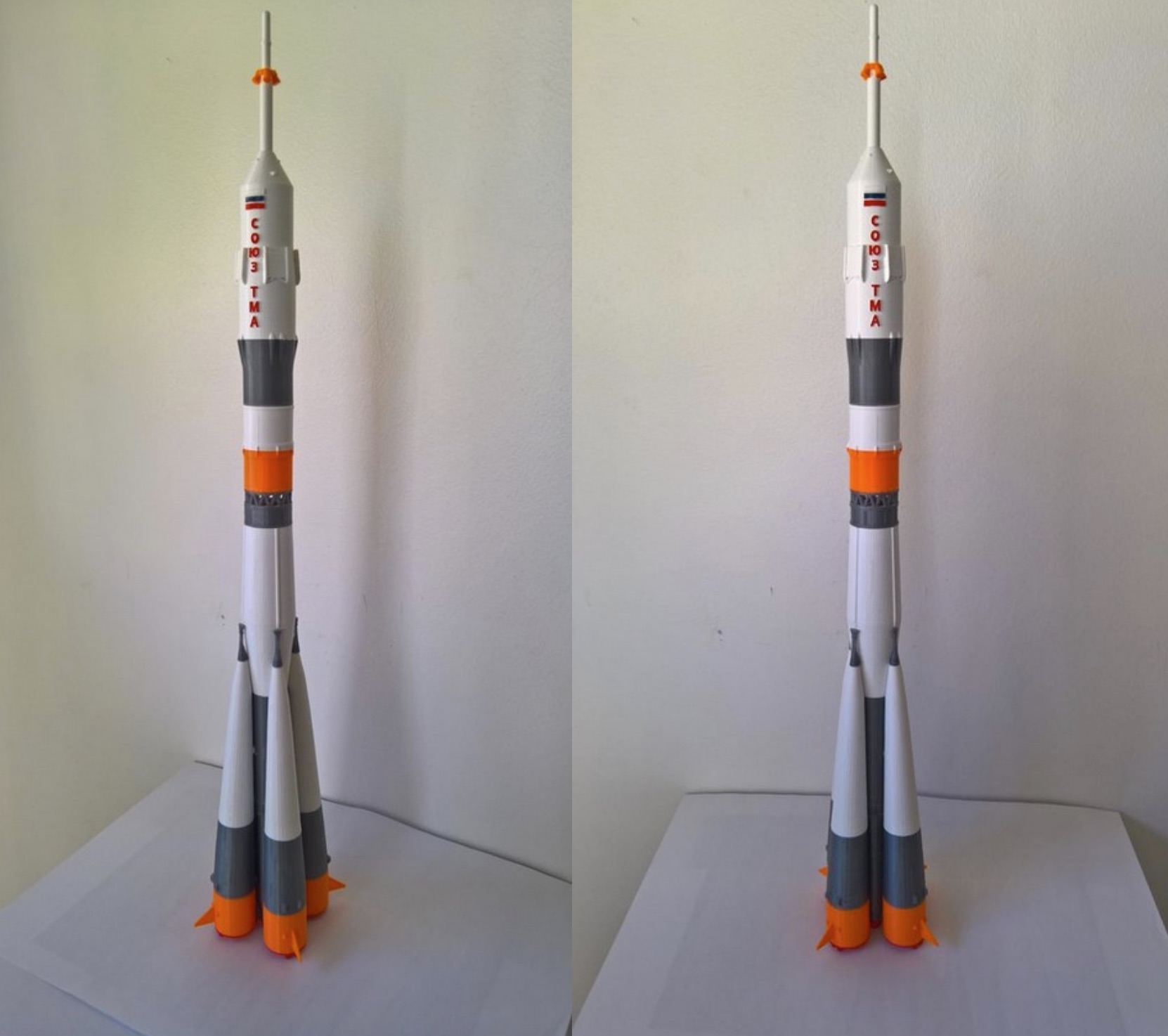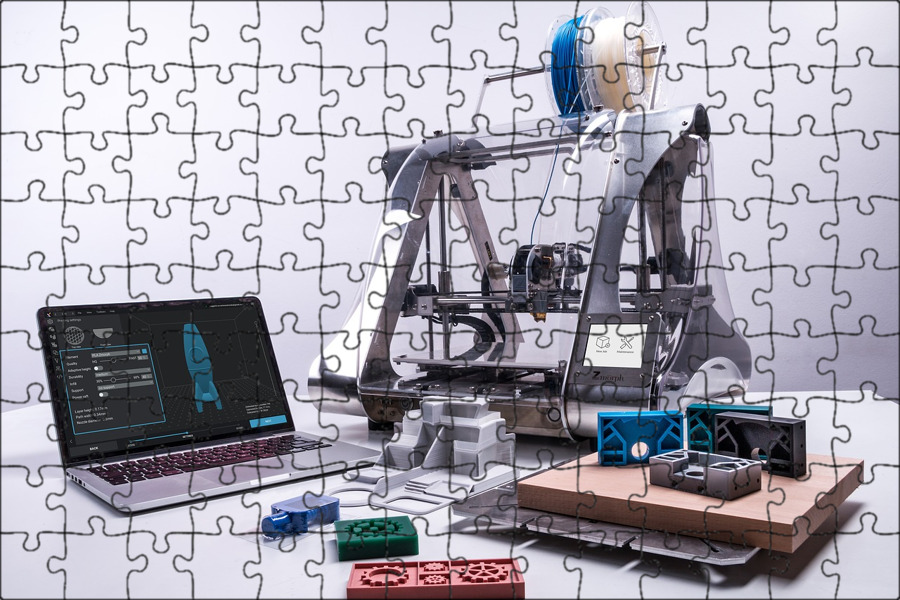Ups 3d printing press release
The UPS Store becomes first major USA retailer to offer 3D printing service
Kate Andrews | Leave a comment
News: printing and packaging retailer The UPS Store has launched an in-store 3D printing service in six shops across the USA.
Stratasys, a leading manufacturer of 3D printers and production systems, has announced today that it is providing its 3D printing technology to The UPS Store, a subsidiary of United Parcel Service (UPS) of America that provides printing services and packaging materials in over 4700 shops in the US, Puerto Rico and Canada.
"The project is part of a test program by The UPS Store that will make it the first national retailer in the US to offer 3D printing service to entrepreneurs, architects, start-ups and other retail customers," Stratasys said.
As part of their pilot, The UPS Store will install Stratasys' uPrint SE Plus printers into six locations, starting in San Diego. Customers will be able to bring a Computer Aided Design (CAD) file in to the participating stores and have their designs 3D-printed on-site.
"The UPS Store and Stratasys share the vision of strengthening innovation and competitiveness by making 3D printing accessible to a growing number of users," said Stratasys Executive Vice President, Jon Cobb.
This news comes only a month after UK electronics retailer Maplin became the first UK chain to sell a 3D printer aimed at the domestic market. In other news, NASA has approved the first 3D printer for use in space, which will be flown to the International Space Station [ISS] next year.
You can read more about the way 3D printing is changing the worlds of architecture, design, food and medicine in Print Shift, our one-off print-on-demand magazine all about additive manufacturing.
Read more coverage on 3D printing »
See more technology features »
Image is by Stratasys.
Here's the press release from Stratasys:
Stratasys to provide 3D printers to The UPS Store for new retail 3D printing service
Stratasys uPrint SE Plus systems will be used in pilot program.
Stratasys, a leading manufacturer of 3D printers and production systems, today announced that it has been selected by The UPS Store to provide its 3D printing systems to The UPS Store as part of a test program that will make it the first national retailer in the U.S. to offer 3D printing service to entrepreneurs, architects, start-ups and other retail customers. This service will enable UPS Store customers to have their 3D design 3D printed on-site.
The test signals a collaborative effort by Stratasys and The UPS Store to make 3D printing accessible to small businesses as awareness of the technology and its capabilities grows. Stratasys 3D Printers can create on-demand, custom objects of virtually any complexity in a fast and simple process.
"3D printing technology is becoming increasingly accessible to a growing number of companies and consumers. Small businesses are beginning to realise how this revolutionary technology can help them to be more competitive," said Stratasys Executive Vice President, Jon Cobb.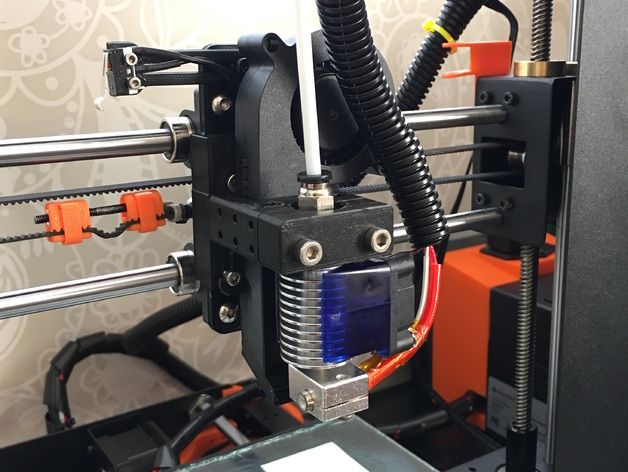
"The UPS Store and Stratasys share the vision of strengthening innovation and competitiveness by making 3D printing accessible to a growing number of users."
While the program is aimed at small businesses, it is open to anyone interested in trying out on-site 3D printing services. "After doing a lot of research, we went with the Stratasys uPrint, because it has a small footprint and is easy to operate," said The UPS Store small business technology leader, Daniel Remba.
Following the launch of the test, retail customers will be able to bring a Computer Aided Design (CAD) file to participating UPS Store locations and have their 3D design printed on-site.
The UPS Store is installing Stratasys uPrint SE Plus 3D Printers in six test locations, beginning in San Diego.
Subscribe to our newsletters
Your email addressDezeen Debate
Our most popular newsletter, formerly known as Dezeen Weekly.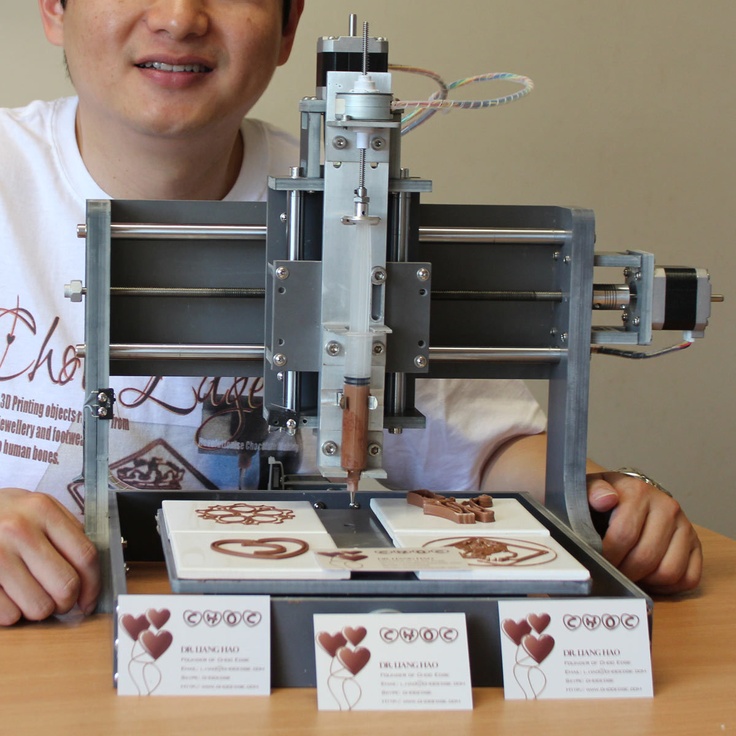 Sent every Thursday and featuring a selection of the best reader comments and most talked-about stories. Plus occasional updates on Dezeen’s services and breaking news.
Sent every Thursday and featuring a selection of the best reader comments and most talked-about stories. Plus occasional updates on Dezeen’s services and breaking news.
Sent every Tuesday and containing a selection of the most important news highlights. Plus occasional updates on Dezeen’s services and breaking news.
Dezeen DailyA daily newsletter containing the latest stories from Dezeen.
New! Dezeen In DepthSent on the last Friday of every month, Dezeen in Depth features original feature articles, interviews and opinion pieces that delve deeper into the major stories shaping architecture and design.
Dezeen JobsDaily updates on the latest design and architecture vacancies advertised on Dezeen Jobs. Plus occasional news.
Dezeen AwardsNews about our Dezeen Awards programme, including entry deadlines and announcements. Plus occasional updates.
Dezeen Events GuideNews from Dezeen Events Guide, a listings guide covering the leading design-related events taking place around the world. Plus occasional updates.
Plus occasional updates.
We will only use your email address to send you the newsletters you have requested. We will never give your details to anyone else without your consent. You can unsubscribe at any time by clicking on the unsubscribe link at the bottom of every email, or by emailing us at [email protected].
For more details, please see our privacy notice.
Thank you!
You will shortly receive a welcome email so please check your inbox.
You can unsubscribe at any time by clicking the link at the bottom of every newsletter.
Sensing threat, UPS plans to expand its 3D printing operations
By Nick Carey
6 Min Read
LOUISVILLE, Ky. (Reuters) - United Parcel Service plans to expand its 3D printing service to Asia and Europe, the U.S. shipping company has told Reuters, in a bid to fully embrace and get ahead of a trend that threatens to eat away a small but lucrative part of its business.
United Parcel Service air craft are being loaded with air containers full of packages bound for their final destination at the UPS Worldport All Points International Hub during the peak delivery month in Louisville, Kentucky December 3, 2015.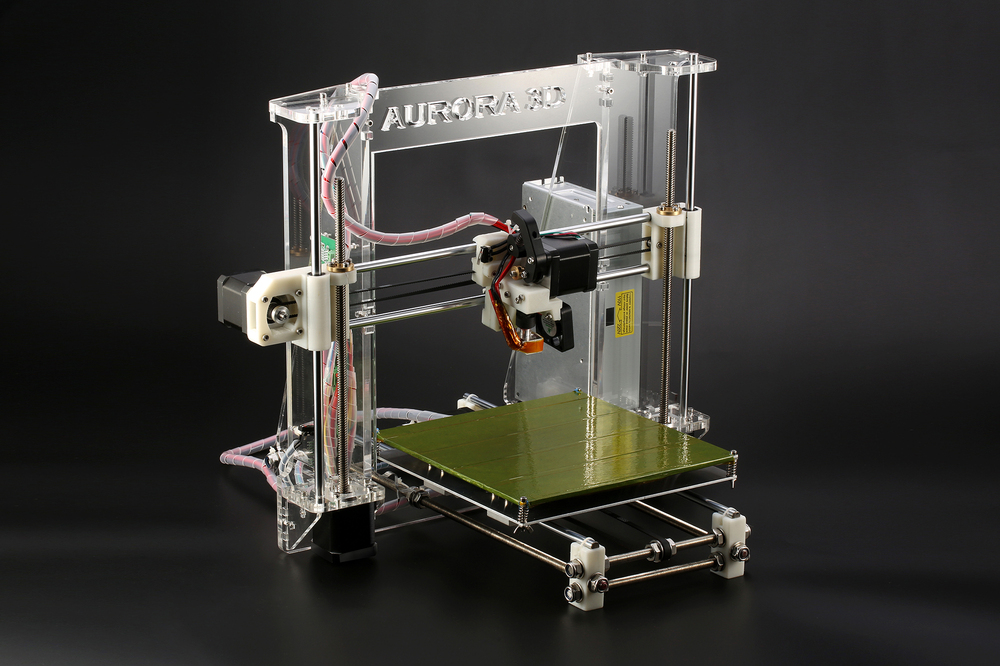 REUTERS/John Sommers II
REUTERS/John Sommers II
Aside from its main package delivery service, UPS gets an undisclosed portion of its revenue from storing and shipping parts for manufacturers. If those customers were to switch to 3D printing their own parts, that business would face a drastic reduction.
To counter that threat, UPS has chosen to get on board the 3D revolution, and is now looking to offer a service in which UPS will print out plastic parts - anything from nozzles to brackets to prototype soap dispensers or multi-faceted moving parts - around the world and deliver them.
“3D printing is a great opportunity for us, but it’s also a threat,” Alan Amling, UPS vice president for corporate strategy, told Reuters.
The dynamic - welcoming rather than fighting a threatening new technology - is not unlike automakers such as Toyota Motor Corp and Volkswagen AG teaming up with ride-hailing services Uber and Gett, respectively.
Amling said UPS is looking at either Singapore or Japan for an Asian 3D printing factory. He did not say where the company might open a European facility, though UPS’s operational hub in Europe is in Cologne, Germany.
He did not say where the company might open a European facility, though UPS’s operational hub in Europe is in Cologne, Germany.
UPS has already got into the business in its home market. In May, it launched a U.S.-based 3D printing service with Fast Radius, a 3D printing company based outside Atlanta, where UPS is headquartered. UPS bought an unspecified stake in Fast Radius, which has a 3D printing factory at UPS’s Louisville, Kentucky, hub.
There are also now 3D printers at 60 UPS stores in the United States that print parts using industrial grade thermoplastics. Customers can upload images for printing at the Fast Radius factory or at one of those UPS stores and have the printed products shipped to any location.
HOW IT WORKS
A 3D printer works by laying down successive levels of material, mostly plastics at this point, to create an object. Quality printers that make metal parts cost over $500,000, while printers that use thermoplastics can cost tens of thousands of dollars.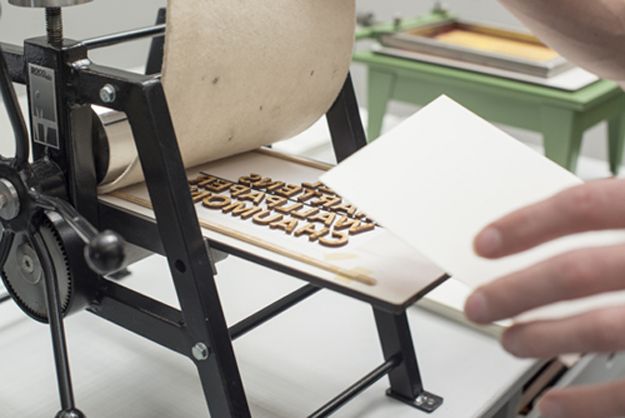 Prices are expected to come down as the technology advances.
Prices are expected to come down as the technology advances.
While 3D printing is still slow compared to high-speed production lines, the technology has progressed so it can be used effectively for prototypes or some components that are not needed in high volumes. Larger firms such as General Electric Co are incorporating 3D-printed parts into production.
That progress is a mixed blessing for UPS. As the cost of 3D printers drops and processes improve, that could undermine UPS’s efforts to develop 3D printing as a service - because customers could buy just buy their own printers.
“Why wait a day for a part to arrive (from UPS) when you’ll be able to innovate six times a day on your own?” said Richard D’Aveni, a professor of strategy at the Tuck School of Business at Dartmouth College.
A QUIET CORNER
What Fast Radius calls its “digital manufacturing factory” is a quiet operation occupying space in a corner of the UPS building in Louisville, without any of the grime, noise or bustle associated with a standard factory.
Instead, a handful of machines work noiselessly, printing parts of varying sizes and shapes. During a recent visit to the operation by Reuters, Fast Radius CEO Rick Smith said that because of 3D printing, manufacturing is about to transform from “being about where it’s made to where it’s needed.”
One of the printers was close to completing a black plastic prototype hydraulic pump for a manufacturing customer in Germany - a process that takes about 72 hours. Smith said the job illustrates the need for UPS to expand its service beyond the United States.
Another customer, action camera maker GoPro Inc, is making use of Fast Radius’ printers, coupled with UPS’s ability to deliver a prototype the next day.
Previously, if GoPro wanted to try out new designs, it would take weeks or even months to make a mock-up, senior GoPro product designer Ryan Harrison said. Now the company can innovate much quicker.
“3D printing allows you to fail quicker or to stumble on moments of genius,” Harrison said.
BRACING FOR DISRUPTION
UPS does not break out how much it makes from its supply chain services, including warehouse storage. But in 2015 it reported about $6 billion in “forwarding and logistics” revenue, or about 10 percent of its total sales. An unknown portion of that came from its warehousing operations.
UPS’s biggest rival, FedEx Corp, is less focused on supply-chain services and has not dipped into 3D printing. But if UPS succeeds, analysts said, FedEx could follow suit. The company declined to comment on 3D printing.
German competitor DHL, a unit of Deutsche Post AG, issued a report earlier this year warning the technology could upend traditional mass-production manufacturing, in which goods are shipped around the world.
UPS’s foray into 3D printing is not its first experiment in other disruptive industries. In October 2015, it invested in drone maker CyPhy Works, and this February bought a stake in same-day delivery company Deliv - in both instances to understand and harness potentially industry-shaking technologies.
Morningstar analyst Keith Schoonmaker said while 3D printing has not yet proved itself on a mass scale, it makes sense for UPS to incorporate a technology “that could supplement or replace its services.”
Reporting by Nick Carey; Editing by Eric Effron and Bill Rigby
90,000 12 3D printing startups that were founded at the height of the pandemic.
How many times have you heard that startups are the driving force behind the additive manufacturing industry? Enough to understand that we need to keep an eye out for those entrepreneurs who could be the next unicorn in this industry. While we understand that startups need to remain in stealth mode until their technology is ready enough to be officially introduced into the industry, we cannot fail to pay tribute to these startups that were created in the midst of the COVID19 pandemic.. Let's drink to these twelve startups that, in the words of Winston Churchill, did not let "a good crisis go to waste."
1. F3nice
F3nice
Founded in May 2020 in Italy, one of the countries most affected by the pandemic, F3nice is the idea of Luisa Elena Mondora and Matteo Vanazzi. Both founders came up with the idea for F3nice in 2019 while analyzing the situation in the oil and gas industry. With the decommissioning of offshore assets in the oldest oilfields in the North Sea and digital inventory for on-demand and just-in-time spare parts production, they explored the possibilities of using high-value offshore decommissioning scrap metal for the project circular economy.
F3nice - whose pronunciation is similar to the Italian word for "phoenix", "Fenice" (a bird that takes on new life from the ashes of its predecessor) - strives to live up to its name by collecting scrap metal and disused parts and turning them into metal 3D - printing powder.
The company's project gained momentum over time and interested Equinor Ventures, which signed a letter of intent with the team.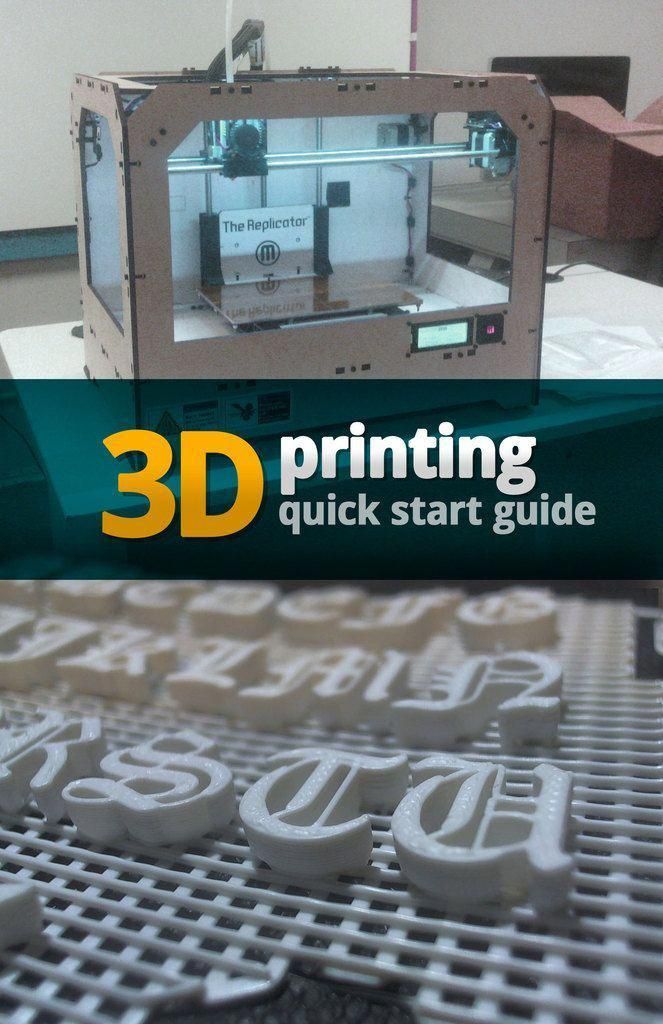 Under this contract, the material manufacturer will recycle Equinor's waste, and the raw material made from it will be used to print parts for the commissioning of the Johan Kastberg field, located near Hammerfest, by Fieldmade - as part of a true circular economy ecosystem.
Under this contract, the material manufacturer will recycle Equinor's waste, and the raw material made from it will be used to print parts for the commissioning of the Johan Kastberg field, located near Hammerfest, by Fieldmade - as part of a true circular economy ecosystem.
In an interview with 3D ADEPT Media, the company told 3D ADEPT Media that its powder is "identical to any other high quality VIGA powder and can be reused in the printing process as many times [as the alloy allows]. The added value is that when If the powder is considered "exhausted", the OEM can contact F3nice and request that it be recycled instead of being disposed of (at great cost) as hazardous waste. F3nice can provide this service not only for their products, but for any powder." .
2. SphereCube
Remember we told you that startups have the opportunity to think about a green business model from the very beginning of their venture? Well, SphereCube decided to play its part in addressing these environmental issues at the manufacturing level by getting rid of composite and mold waste to reduce the environmental impact of composite manufacturing.
This 3D printing startup is a division of the Politecnico Universidad Marche (UNIVPM, Ancona - Italy), which develops 3D printers capable of producing composite objects using thermosetting resins and continuous fiber reinforcement.
Through the interaction of a heat source with the raw materials involved in the process, the SphereCube system allows the production of composite materials with continuous fiber reinforcement and a thermosetting matrix. This innovative manufacturing process is able to automatically create products from high-performance composite materials without geometric restrictions," the company said in an interview with 3D ADEPT Media. is a key step towards a 100% sustainable supply chain.
SphereCube filed its first patent "Method and system for 3D printing of composite materials" (Italian patent No. 102021000006800) and registered a European trademark.
In 2022, the focus will be on the design and manufacture of the minimum viable product, and customer feedback will further validate the company's technology solution.
3. Replique
Replique, the Mannheim-based venture of BASF's Chemovator business incubator, received some media hype when it announced a partnership with Miele, the German appliance manufacturer. Under the terms of the partnership, the company receives the exclusive right to manufacture and supply high-quality 3D printed accessories from Miele using its decentralized production network.
Founded in 2020 by Janos Varadi, Dr. Henrique Wonneberger and Dr. Max Siebert, the company provides an industrial 3D printing platform that allows OEMs to supply on-demand parts to their customers through a global, decentralized and secure 3D printing network. The company is entering a market valued in excess of US$500 billion that generates revenue at significantly higher margins than selling new services.
From qualification of 3D printed parts to digital inventory and production network, the company offers a solution that is superior to anything commonly seen on the market.
For industrial production, Replique uses its global network of service bureaus, approved by industrial quality. With this solution, OEMs reduce total cost of ownership while increasing flexibility. Not to mention that they are able to provide the best after sales service to their customers as parts are always available, even at the end of a product's life cycle; thus, they gain a competitive advantage.
Companies that have already used Replique's services include manufacturers of components in the automotive industry and, most recently, Siena Garden, an expert in the category of garden tools and garden furniture.
4. Marklix
In the field of spare parts, another startup was founded in France last year - exactly in February 2020 - with the mission of making "obsolescence obsolete". With this background information, anyone in the AM industry will quickly realize that Marklix allows manufacturers to qualify and distribute replacement parts by 3D printing on-demand and on-site production.
Their journey began with the development of "The Market", where the idea was to be able to find all parts from all manufacturers, for example a part for a vacuum cleaner, and thus allow people to repair their vacuum cleaner without having to change the entire device. Two problems arose during the project: the price of the parts was too expensive - it was often cheaper to buy a new instrument than to order a part - and the parts were not digitized, which meant that they could not be 3D printed with a simple mouse click. To overcome these obstacles, the Marklix team decided to develop new software solutions: The first software solution solves the problem of spare parts prices, allowing manufacturers to be more competitive and save time.
"This is an ERP/MES that allows them to manage their fleet, edit invoices and invoices, take orders online, allowing the manufacturer to choose whether the customer will pay directly or not, secure files, etc." The feedback we have received shows an average time saving of a few minutes per order, as well as an improvement in the transparency and efficiency of their company. In this way, our partners become more competitive, which makes prices more attractive," the company explains.
In this way, our partners become more competitive, which makes prices more attractive," the company explains.
The second solution is to digitize inventory, which is critical for some companies due to the high cost of spare parts inventory. In this vein, this software solution helps engineers solve five main tasks: identifying 3D printed parts using artificial intelligence, qualifying parts using suitable materials and manufacturing technology, calculating ROI (from an economic and environmental point of view), transferring parts that have passed the first three stages , to the online catalog and print. The last task can be solved both internally and externally if the company does not have production facilities. After the positive response they received to launch their first software, the Marklix team, led by Pierre-Jacques Lyon and Thomas Boullier, respectively CEO and CTO, is not going to stop there. They will continue to serve the needs of 3D printer and parts manufacturers.
5. Addiblast
It's not every day we talk about AM in Slovenia... and a startup that makes us imagine something more than just a tourist trip to a land of amazing caves is Addiblast. This command forces us to explore that area of the production process that every operator dreads: post-processing. Founded in 2020, the startup is part of FerroECOBlast® Europe, a family owned company that has built a strong reputation for solving the toughest surface treatment problems. The parent company's portfolio includes a wide range of solutions such as shot blasting, hardening, enameling and coating, dry ice and dry snow cleaning, and UHP waterjet. In this way, Addiblast uses more than fifty years of experience from its parent company to provide the AM industry with a portfolio of solutions that includes shot blasting, powder removal and recycling. The company debuted at this year's Formnext Showcase, showcasing the capabilities of three of its flagship products:
- The BAM station is a surface treatment solution designed for various processes such as smoothing, roughing, surface unification and polishing, removal of support structures and precise powder removal from extremely complex structures.
 It is made of stainless steel and is suitable for all types of shot blasting. shot blasting.
It is made of stainless steel and is suitable for all types of shot blasting. shot blasting.
- MARS Kit (Metallic Additive Removal System) Available in three versions, these machines allow you to remove powder from complex or large parts. Each machine is equipped with a system for communication and data exchange with other machines of the manufacturer. The main difference between MARS01, MARS02 and MARS03 is that the latter is fully automated, explosion-proof and ATES compliant. In addition, thanks to the closed cycle operation with inertial atmosphere, the machine can keep the oxygen level below 2%. This prevents contamination and oxidation of the powder during degreasing and conditioning, and takes the reusability of the powder to a new level.
- The latest development in this portfolio is the STAR (Additive Transfer and Recycling Station). Designed as a central station that continuously and automatically controls the pneumatic transmission, processing and conditioning of the powder, this machine provides a direct connection to the 3D printer and other equipment.
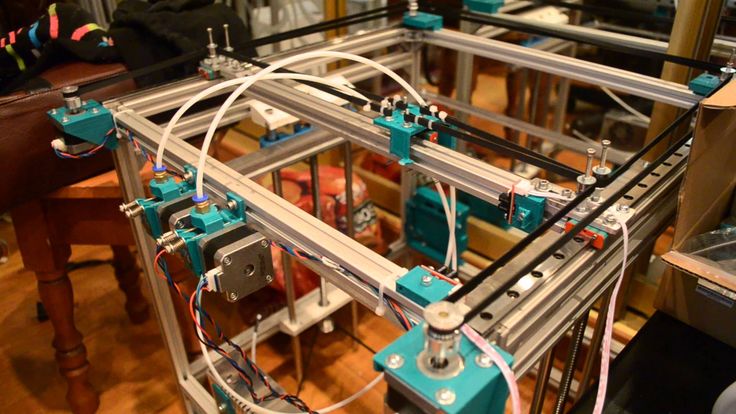 This is its main advantage compared to other manufacturer's solutions. It can also be used to clean the primary powder and, like the MARS series, it prevents contamination and oxidation of the powder during dedusting and conditioning, and takes powder reusability to a new level.
This is its main advantage compared to other manufacturer's solutions. It can also be used to clean the primary powder and, like the MARS series, it prevents contamination and oxidation of the powder during dedusting and conditioning, and takes powder reusability to a new level.
6. NematX AG
The next startup on this list is an ETH Zurich spin-off project founded by Raphael Heeb and Sylvan Gantenbein. With the goal of unlocking a new generation of 3D printing using high-performance polymers and significantly exceeding existing standards in related end-use components, the Swiss startup targets all vertical industries whose parts must withstand harsh environmental conditions. NematX AG, one of the winners of the Formnext 2020 startup competition, is developing a technology it calls "Nematic 3D Printing" to help industrial companies make their small-scale business more profitable and sustainable.
"Liquid Crystalline Polymers - LCP for short - belong to a family of high performance plastic materials.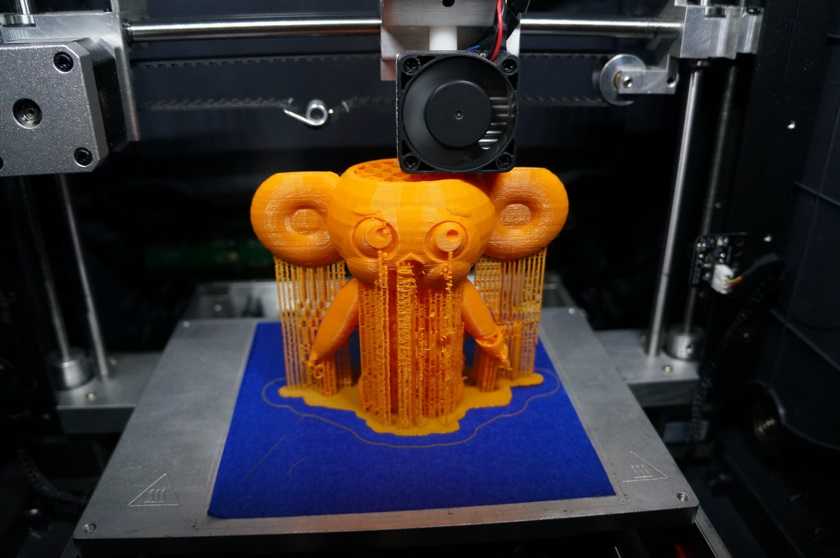 Compared to conventional thermoplastics such as PEEK or PEI, LCP molecules are relatively short and rigid and have unique properties, making them very attractive for use in 3D printing. When molten, LCPs take on an order of motion, like bundles of wood logs floating down a river," the company explains. Therefore, Nematic 3D printing technology is based on material extrusion (FFF 3D printing). "During printing, we can align these individual LCP stacks along the print direction to produce parts with unrivaled polymer additive manufacturing mechanical and thermal properties," NematX AG explains on its website.
Compared to conventional thermoplastics such as PEEK or PEI, LCP molecules are relatively short and rigid and have unique properties, making them very attractive for use in 3D printing. When molten, LCPs take on an order of motion, like bundles of wood logs floating down a river," the company explains. Therefore, Nematic 3D printing technology is based on material extrusion (FFF 3D printing). "During printing, we can align these individual LCP stacks along the print direction to produce parts with unrivaled polymer additive manufacturing mechanical and thermal properties," NematX AG explains on its website.
*By controlling the molecular alignment of our LCP 3D printing materials, we achieve superior stiffness and strength in 3D polymer printing. In the printing direction, we can achieve a Young's modulus of up to 25 GPa and an ultimate tensile strength of 650 MPa. In the transverse direction, the stiffness and strength of other thermoplastics such as PEEK or PLA are achieved," they note.
and Additive Drives GmbH can, and most interestingly, the company did this during the first peak of the Covid-19 pandemiclast year when the economy was not at its best. Founded by Philipp Arnold, Jakob Jung and Axel Helm, Additive Drives GmbH develops and manufactures additively manufactured electric motor components. With a $1.5 million seed investment from AM Ventures Holding GmbH, Additive Drives GmbH aims to expand the electric drive market with new applications.
*Jacob and I both came from the applied industry. We were developing electronic robots in a former car company where we worked. Engineers by training, we have a wealth of experience with copper and additive manufacturing equipment. After in-depth research, we concluded that the combination of AM and copper can lead not only to shortened motor development and test cycles, but also to improved application performance. After several successful trials, we turned to Axel Helm, who has solid experience in manufacturing processes and industrialization. His experience in copper processing and AM process optimization is critical to identifying the type of applications we could work on. Therefore, we decided to combine our strengths to make Additive Drives GmbH a viable business," Arnold told 3D ADEPT Media. With 13 employees, Additive Drives GmbH aims to increase the performance of electric motors by 45% by focusing on copper windings, the heart of the motor, AM is definitely part of the game, as direct CAD manufacturing allows for shorter development and test cycles, moreover, it does not compromise material parameters and instead offers electrical conductivity at the same level as While the Additive Drives GmbH team is on the threshold of new adventures in this field of application, it should be noted that they have won the Gründerpreis Sachsen, the award for the most innovative young company in Saxony, a free state in the southeast of Germany.0004
His experience in copper processing and AM process optimization is critical to identifying the type of applications we could work on. Therefore, we decided to combine our strengths to make Additive Drives GmbH a viable business," Arnold told 3D ADEPT Media. With 13 employees, Additive Drives GmbH aims to increase the performance of electric motors by 45% by focusing on copper windings, the heart of the motor, AM is definitely part of the game, as direct CAD manufacturing allows for shorter development and test cycles, moreover, it does not compromise material parameters and instead offers electrical conductivity at the same level as While the Additive Drives GmbH team is on the threshold of new adventures in this field of application, it should be noted that they have won the Gründerpreis Sachsen, the award for the most innovative young company in Saxony, a free state in the southeast of Germany.0004
What the startup zone has in store for 2021…
8. Axtra 3D
It is rare to find a star company that has made a real splash with its debut in the international arena of the AM industry.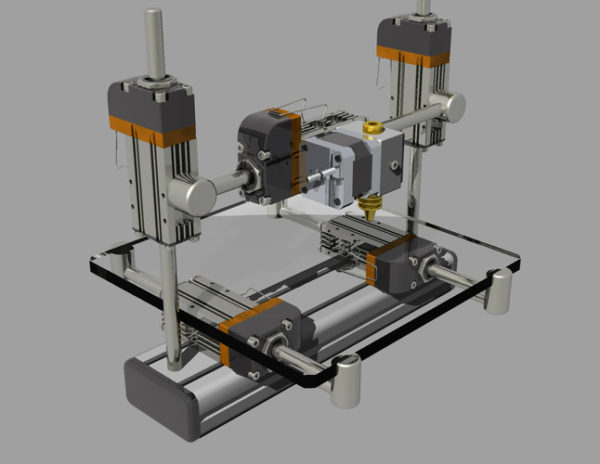 Axtra 3D did just that at Formnext 2021 with the launch of a unique 3D printer. We recently learned more about this company's innovations, and two things really caught our attention: the product development time, which only takes 9 months, and the technology. This technological solution is the result of a collaboration between the Xometry manufacturing platform and Axtra3D, a developer of advanced solutions for additive manufacturing using optoelectronics. Together they created a 3D printer based on the patented Hybrid PhotoSynthesis (HPS) technology, which can combine the advantages of SLA, DLP and LCD. The stakes are even higher when we know that when it comes to resin 3D printing, operators often oscillate between the advantages and disadvantages of SLA, DLP and LCD. According to Xometry, choosing between these three solutions requires tradeoffs in either print speed and resolution (DLP/LCD) or surface quality and print area (SLA). What makes hybrid photosynthesis (HPS) outstanding? HPS delivers an accurate resolution printing process and delivers fast print speeds and excellent surface quality even at large print areas.
Axtra 3D did just that at Formnext 2021 with the launch of a unique 3D printer. We recently learned more about this company's innovations, and two things really caught our attention: the product development time, which only takes 9 months, and the technology. This technological solution is the result of a collaboration between the Xometry manufacturing platform and Axtra3D, a developer of advanced solutions for additive manufacturing using optoelectronics. Together they created a 3D printer based on the patented Hybrid PhotoSynthesis (HPS) technology, which can combine the advantages of SLA, DLP and LCD. The stakes are even higher when we know that when it comes to resin 3D printing, operators often oscillate between the advantages and disadvantages of SLA, DLP and LCD. According to Xometry, choosing between these three solutions requires tradeoffs in either print speed and resolution (DLP/LCD) or surface quality and print area (SLA). What makes hybrid photosynthesis (HPS) outstanding? HPS delivers an accurate resolution printing process and delivers fast print speeds and excellent surface quality even at large print areas.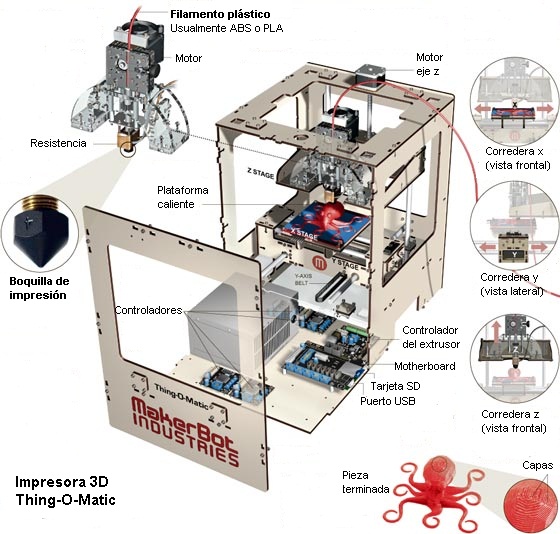 The process combines two light sources in a custom assembly (DLP and laser) to create a matched light engine that efficiently harnesses the power of the two sources. "In our HPS technology, the laser determines the resolution, and as a result, HPS delivers higher resolution and finer detail than standard DLP," explains Gianni Zitelli, co-founder of Axtra3D. Thus, the new process provides DLP/LCD speed, surface quality and SLA scalability, as well as ultra-high resolution, continuous printing and isotropic detail processing. “Users often face high surface treatment costs,” says Praveen Tummala, another co-founder of the company, “but with the high surface quality and resolution offered by HPS, they can save time and money as 3D printed parts do not require post-print surface treatment. ". What is the role of Xometry? As the story goes, the project started in early 2021 with the goal of launching their 3D printer during Formnext 2021. “We thought it would take us about 18 months to complete a project like this,” Tummala explains.
The process combines two light sources in a custom assembly (DLP and laser) to create a matched light engine that efficiently harnesses the power of the two sources. "In our HPS technology, the laser determines the resolution, and as a result, HPS delivers higher resolution and finer detail than standard DLP," explains Gianni Zitelli, co-founder of Axtra3D. Thus, the new process provides DLP/LCD speed, surface quality and SLA scalability, as well as ultra-high resolution, continuous printing and isotropic detail processing. “Users often face high surface treatment costs,” says Praveen Tummala, another co-founder of the company, “but with the high surface quality and resolution offered by HPS, they can save time and money as 3D printed parts do not require post-print surface treatment. ". What is the role of Xometry? As the story goes, the project started in early 2021 with the goal of launching their 3D printer during Formnext 2021. “We thought it would take us about 18 months to complete a project like this,” Tummala explains.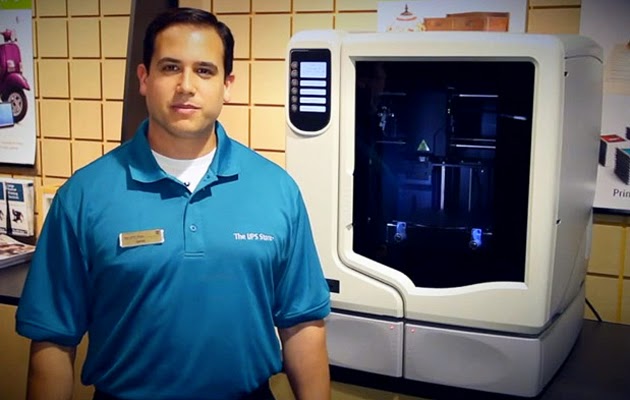 "Thanks to the team and our partners in Europe, we only needed 9months". In August, the Italian team launched the first simulation of a complex optical system, which was a resounding success. This breakthrough accelerated the entire production process. "A lot of this is due to Xometry, as they were able to deliver about 2,000 parts in 6 weeks, which is extremely difficult period," says Zitelli.
"Thanks to the team and our partners in Europe, we only needed 9months". In August, the Italian team launched the first simulation of a complex optical system, which was a resounding success. This breakthrough accelerated the entire production process. "A lot of this is due to Xometry, as they were able to deliver about 2,000 parts in 6 weeks, which is extremely difficult period," says Zitelli.
"We have access to CNC suppliers in Italy, but this would not be a strategic move for our company. Working with Xometry gives us access to thousands of suppliers around the world - this is the real value of our collaboration." To complete the project for the start of the forum, Axtra3D turned to Xometry to fabricate all the CNC aluminum parts used to assemble the printer, from very small components for the lighting system to components for the base of the printer. "We can't imagine any other partner who could deliver the parts in time for us to launch the product and present it at Formnext," says Tummala.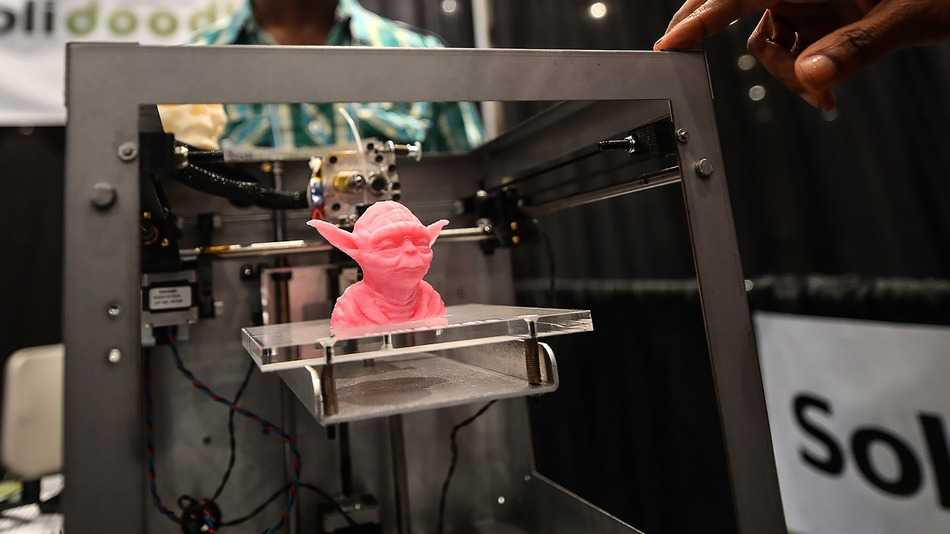 closely with Liana Zedginidze from Xometry throughout the entire production process. “We are very grateful to Liana for her support of our project. She was available for us around the clock and made sure that the ordered parts were manufactured and delivered on time,” Zitelli said. The next step for both partners is to produce 10 beta 3D printers by June 2022 to launch their product in the industrial market.
closely with Liana Zedginidze from Xometry throughout the entire production process. “We are very grateful to Liana for her support of our project. She was available for us around the clock and made sure that the ordered parts were manufactured and delivered on time,” Zitelli said. The next step for both partners is to produce 10 beta 3D printers by June 2022 to launch their product in the industrial market.
9. Additive Appliances
This was followed by Additive Appliances, a startup registered in April 2021 with the aim of developing the next generation of home appliances such as coffee makers and personal care products. From the start, the company has been backed by angel investors, including a university company specializing in computational fluid dynamics and topology optimization. Together with Kilometro Rosso, a private innovation center in Italy, Additive Appliances received an EU grant as part of the Digital Innovation Hub World's First Open Call. The funding will accelerate the development of Additive Appliances' 3D printed heat exchanger for household coffee machines project. The Italian startup has a decade of experience in 3D printing, such as heat exchangers. In this case, he explains that controlling the temperature and pressure of the water is the key to extracting the best properties of coffee, and the solution allows for more efficient and environmentally friendly brewing. Electrothermal home appliances control process variables by incorporating few (hardly recyclable) components, while traditional thermomechanical devices do not control them directly, exhibiting quality and repeatability issues. Currently, consumers have to find a compromise between quality and environmental friendliness, according to a company press release. Interestingly, in order to increase productivity, explore new possibilities, and functional personalization, AM can be used at various stages of product development, including final production. As we have seen in the application provided by Additive Drives Gmbh, the combination of AM and traditional manufacturing processes allows for better control of temperature and pressure with built-in, conformal, high efficiency and ultra-compact heat exchangers.
The funding will accelerate the development of Additive Appliances' 3D printed heat exchanger for household coffee machines project. The Italian startup has a decade of experience in 3D printing, such as heat exchangers. In this case, he explains that controlling the temperature and pressure of the water is the key to extracting the best properties of coffee, and the solution allows for more efficient and environmentally friendly brewing. Electrothermal home appliances control process variables by incorporating few (hardly recyclable) components, while traditional thermomechanical devices do not control them directly, exhibiting quality and repeatability issues. Currently, consumers have to find a compromise between quality and environmental friendliness, according to a company press release. Interestingly, in order to increase productivity, explore new possibilities, and functional personalization, AM can be used at various stages of product development, including final production. As we have seen in the application provided by Additive Drives Gmbh, the combination of AM and traditional manufacturing processes allows for better control of temperature and pressure with built-in, conformal, high efficiency and ultra-compact heat exchangers.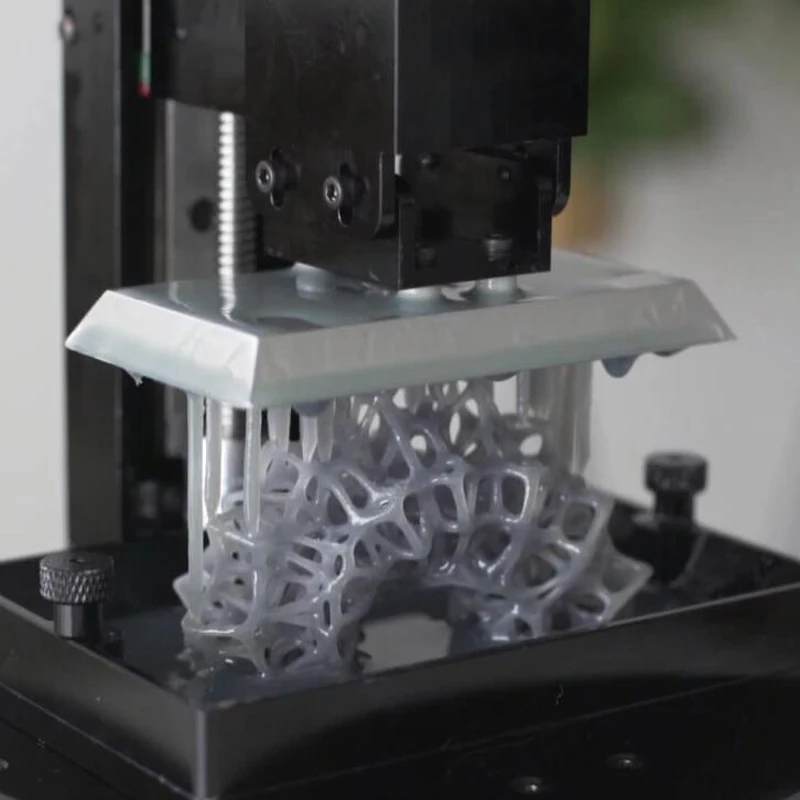 This means that small batches can be designed to celebrate specialty coffees, for example, down to individual consumer preferences. On the other hand, a single piece of mechanics can replace ancillary electronic components, significantly reducing the carbon footprint of a piece of equipment's lifecycle from manufacturing to disposal. In a word, an ecological coffee experience. The space of additive technologies Kilometro Rosso will become the most important partner during the DIHWorld experiment. Its 3D printing infrastructure will help the company quickly put the technology into practice and conduct in-depth process assessments with real-time monitoring systems, which will accelerate production optimization, the company concludes.
This means that small batches can be designed to celebrate specialty coffees, for example, down to individual consumer preferences. On the other hand, a single piece of mechanics can replace ancillary electronic components, significantly reducing the carbon footprint of a piece of equipment's lifecycle from manufacturing to disposal. In a word, an ecological coffee experience. The space of additive technologies Kilometro Rosso will become the most important partner during the DIHWorld experiment. Its 3D printing infrastructure will help the company quickly put the technology into practice and conduct in-depth process assessments with real-time monitoring systems, which will accelerate production optimization, the company concludes.
10. Vispala Technologies
This Indian company is impacting the lives of people with disabilities with its iGrip 3D printed prosthetic arm. A company that develops custom 3D printed orthoses, 3D printed prostheses and prostheses has officially entered the international AM industry scene with the Formnext Start-up challenge 2021.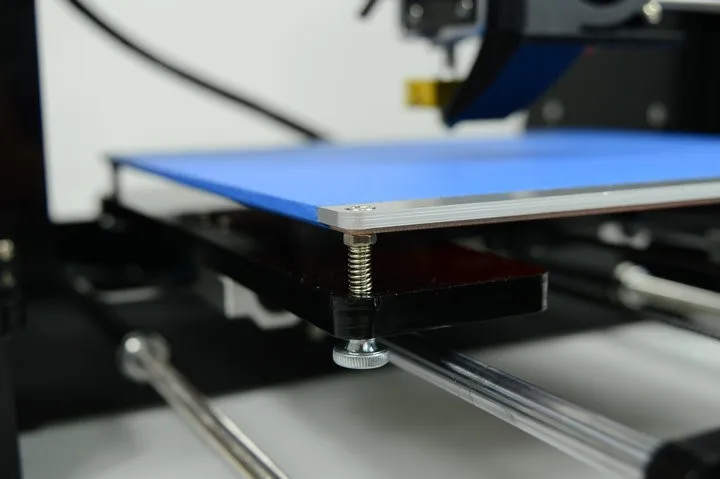 The company stood out from the crowd by winning the AM Ventures Impact Award, which celebrates a winner's approach to sustainable development, taking into account the 17 United Nations Sustainable Development Goals; environmental considerations (such as clean energy and resource conservation) and social considerations (such as education and equity). Vispala's iGrip is an affordable, lightweight, body-powered prosthetic arm that helps patients perform tasks related to daily life. “We at Vispala are up to the challenge to modernize the prosthetics sector with technology and innovation and restore 50% or more of life support to users with comfortable and aesthetically pleasing solutions,” said Deepak Basu, CEO of Vispala Technologies. Vispala Technologies. "At the same time we are creating at the same time we are creating a sustainable social enterprise to scale up our work." 9Nobula Nobula This glass 3D printing startup is a division of the Swedish Institute of Technology KTH and brings a lot of diversity to the range of AM technologies already available on the market.
The company stood out from the crowd by winning the AM Ventures Impact Award, which celebrates a winner's approach to sustainable development, taking into account the 17 United Nations Sustainable Development Goals; environmental considerations (such as clean energy and resource conservation) and social considerations (such as education and equity). Vispala's iGrip is an affordable, lightweight, body-powered prosthetic arm that helps patients perform tasks related to daily life. “We at Vispala are up to the challenge to modernize the prosthetics sector with technology and innovation and restore 50% or more of life support to users with comfortable and aesthetically pleasing solutions,” said Deepak Basu, CEO of Vispala Technologies. Vispala Technologies. "At the same time we are creating at the same time we are creating a sustainable social enterprise to scale up our work." 9Nobula Nobula This glass 3D printing startup is a division of the Swedish Institute of Technology KTH and brings a lot of diversity to the range of AM technologies already available on the market. Their innovation? A Nobula™ glass 3D printer based on direct glass laser deposition (DGLD™) technology that can create complex 3D glass structures. The company has applied for two patents, one for a glass 3D printer and the other for printing materials technology, which will allow it to provide customized glass 3D printing for science, development and manufacturing. Going forward, the company can be expected to complete work on a prototype printer and release the first model before the summer of 2022.
Their innovation? A Nobula™ glass 3D printer based on direct glass laser deposition (DGLD™) technology that can create complex 3D glass structures. The company has applied for two patents, one for a glass 3D printer and the other for printing materials technology, which will allow it to provide customized glass 3D printing for science, development and manufacturing. Going forward, the company can be expected to complete work on a prototype printer and release the first model before the summer of 2022.
12. AM Entrepreneur
This Germany-based company aims to "standardize the implementation of AM's technology values within profitable and sustainable business models." Behind this ambitious vision is Gregor Reischle, who launched and pushed forward the AM roadmap at TÜV SÜD. The creation of AM Entrepreneur was based on one observation: "Distributed manufacturing across business models will help achieve our CO2 emissions targets, as well as unlock entirely new digital business models and strategic positioning potential.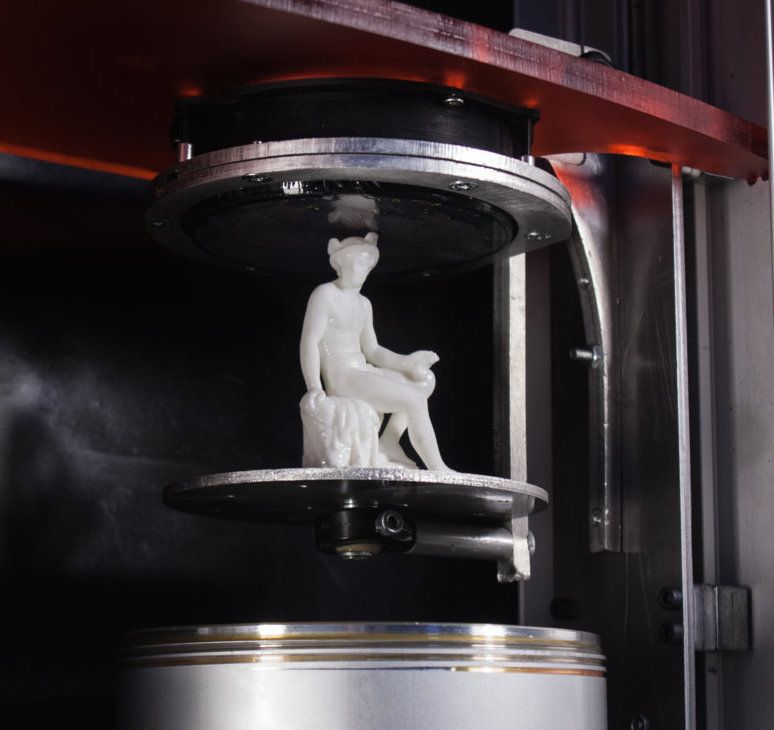 " In today's "business unit" corporate structure, we quite often lack an interdisciplinary, entrepreneurial TEAM DNA, which often leads to project stagnation. The complexity of the business project within additive manufacturing strictly requires collaboration between all operating units and minds", which is a capability that AM Entrepreneur wants to create in industrial companies. Within AM Entrepreneur, Reischle intends to provide an entrepreneurial mindset incubation for all AM Start UP and intrapreneur teams , to provide digital assets that will enable AM process adoption to scale while guaranteeing a predictable return on investment.Finally, it will also provide consulting, training, coaching, and hands-on support to overcome the quality, validation, and business design challenges that industries often face. To date, AM Entrepreneur has already provided workshop and evaluation reports, supplier evaluations, and GAP reports based on AM quality and health and safety standards such as ISO/ASTM 52901.
" In today's "business unit" corporate structure, we quite often lack an interdisciplinary, entrepreneurial TEAM DNA, which often leads to project stagnation. The complexity of the business project within additive manufacturing strictly requires collaboration between all operating units and minds", which is a capability that AM Entrepreneur wants to create in industrial companies. Within AM Entrepreneur, Reischle intends to provide an entrepreneurial mindset incubation for all AM Start UP and intrapreneur teams , to provide digital assets that will enable AM process adoption to scale while guaranteeing a predictable return on investment.Finally, it will also provide consulting, training, coaching, and hands-on support to overcome the quality, validation, and business design challenges that industries often face. To date, AM Entrepreneur has already provided workshop and evaluation reports, supplier evaluations, and GAP reports based on AM quality and health and safety standards such as ISO/ASTM 52901. 52920; coaching AM Innovation TEAM during the "business design phase (multi-week program). He has already supported the installation of AM systems in regulated environments, in accordance with CE or quality assurance requirements - assessments based on ISO / ASTM 52930 standards and others. "After approximately 20 years corporate career, I finally managed to stand out and start my own business. After getting vaccinated, I was able to travel again and participate in FormNext to meet friends in the AM industry. My consulting and business incubator startup leads to the creation of new profitable business models and software solutions. My "do-it-yourself mindset" empowers executives and operations teams to create new successful business models while incorporating AM values," Reischle told 3D ADEPT Media.
52920; coaching AM Innovation TEAM during the "business design phase (multi-week program). He has already supported the installation of AM systems in regulated environments, in accordance with CE or quality assurance requirements - assessments based on ISO / ASTM 52930 standards and others. "After approximately 20 years corporate career, I finally managed to stand out and start my own business. After getting vaccinated, I was able to travel again and participate in FormNext to meet friends in the AM industry. My consulting and business incubator startup leads to the creation of new profitable business models and software solutions. My "do-it-yourself mindset" empowers executives and operations teams to create new successful business models while incorporating AM values," Reischle told 3D ADEPT Media.
Share article:
Anisoprint 3D printing: stronger, more functional, more affordable
December 02, 2015 9:57am
In less than a year, the Anisoprint team, a resident of the cluster of nuclear, new industrial technologies and materials of the Skolkovo Foundation, has gone from a small project to a company with a large international order in the field of 3D printing for the aviation industry.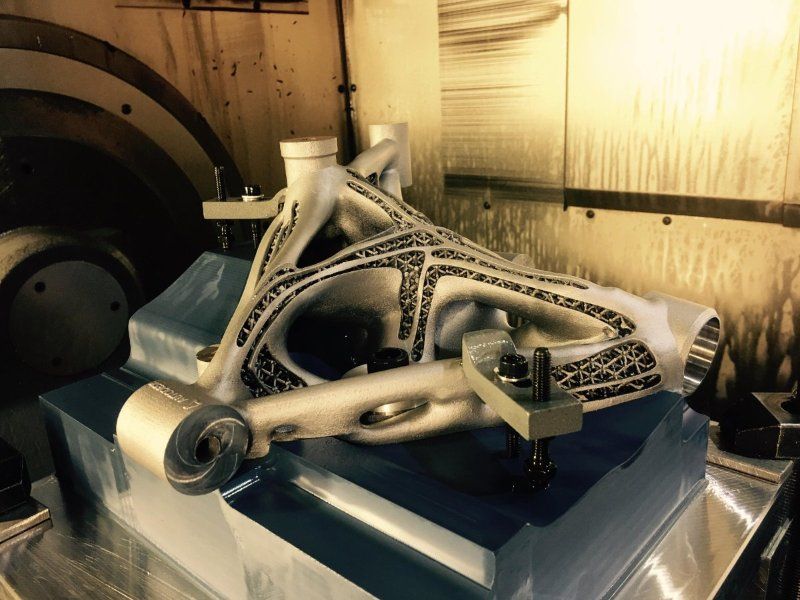
Fedor Antonov, General Director of the company, tells how they succeeded.
Andrey Azarov and Fedor Antonov at the Open Innovations 2015 forum. Photo: TASS.
Anisoprint specializes in 3D printing with high-strength polymer composites. The technology developed by its specialists makes it possible to produce carbon fiber parts of complex shape and with a complex internal structure. The introduction of this technology will make it possible to produce parts with a complex reinforcement scheme and automate their production. Experts estimate that the global 3D printing market will be $18 billion by 2018, including 1 billion personal printed functional parts.
The company was founded on Cosmonautics Day
The project to develop technologies and equipment for the needs of the space industry was initiated at the Skolkovo Institute of Science and Technology (Skoltech) a year and a half ago. “We created the first real laboratory at the institute, which had equipment, employees, and ideas for projects.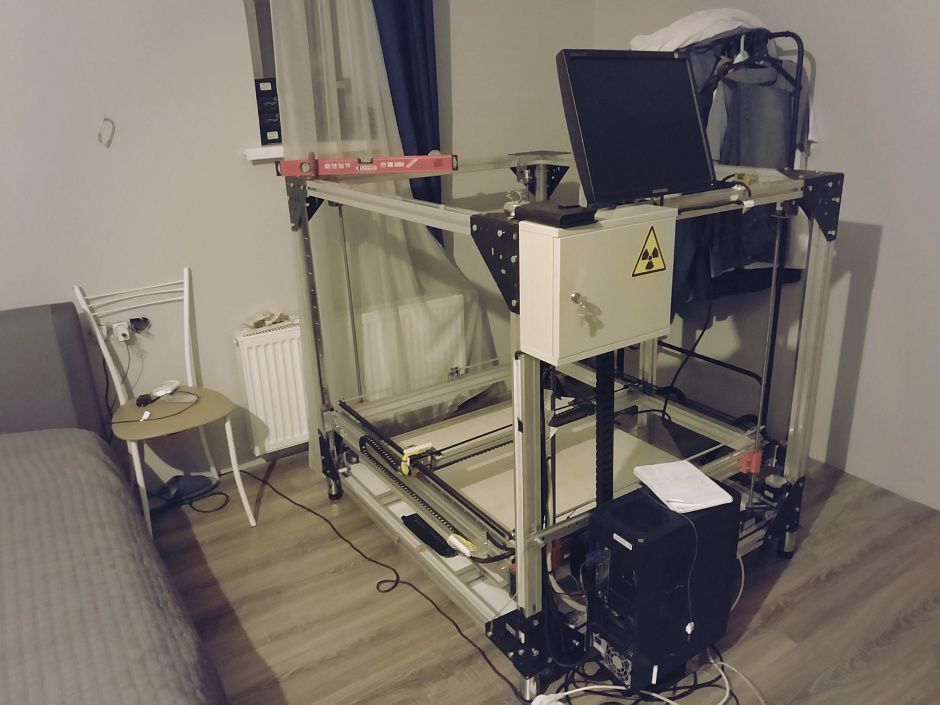 With the director of the center, Professor Gurdal, we formed a list of priority projects that were to be implemented in this laboratory. The idea of “3D printing” of composites reinforced with continuous fibers seemed very promising to us,” recalls Fedor Antonov.
With the director of the center, Professor Gurdal, we formed a list of priority projects that were to be implemented in this laboratory. The idea of “3D printing” of composites reinforced with continuous fibers seemed very promising to us,” recalls Fedor Antonov.
Then, in June 2014, an application was submitted for a subsidy from the Ministry of Education and Science under the Federal Target Program "Research and development in priority areas of development of the scientific and technological complex of Russia for 2014-2020". With the support of the management of Skoltech, a consortium of performers was formed, which also included St. Petersburg Polytechnic University, TPU, ISPMS SB RAS, MISiS and IPMash RAS. The project received government support.
“Skoltech was supposed to develop the equipment, SPbPU was to develop a design and engineering system, the rest of the consortium members were involved in testing. We passed the competitive selection, taking first place out of several hundred projects,” explains the director of Anisoprint.
The agreement with the Ministry of Education and Science was concluded only in October 2014, and a month later it was necessary to hand over the first stage of work, which included the development of an extruder (printer print head) as the main element of the system, its manufacture and testing, manufacturing and testing of samples. Due to the very tight deadlines, it was not possible to do the work properly, but this did not prevent the team from getting results at the beginning of 2015, which at that time had no analogues in the world.
“It was a breakthrough! We were very excited. I wrote an article on Composite online. The article was followed by a press release and serious interest from the press. Vesti and RBTH came to us and filmed stories about us,” says Antonov. “As a result, interested industrial partners (Bosch, Samsung) began to write to us, and guys from the Skolkovo nuclear cluster came to us and offered to apply for resident status.”
Since the first stage of project work was accepted with reservations, the Skoltech project has changed leadership.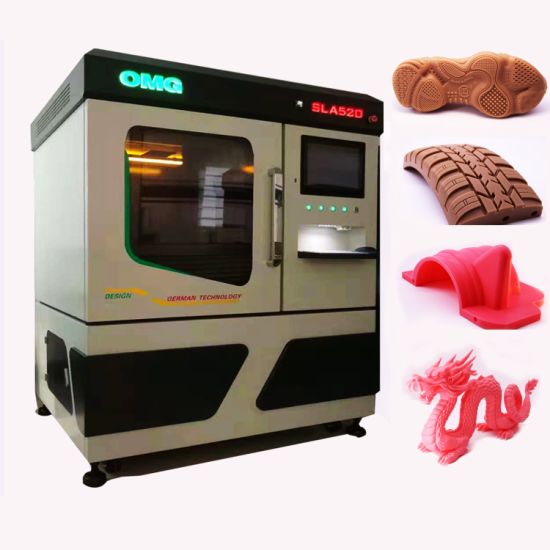 Then the team decided to go on an independent voyage. Fedor Antonov describes this decision as follows: “We consider April 12, 2015, the day of cosmonautics, to be the official foundation day of the company. On this day, the guys and I decided that we would do our job, continue to develop technology in the same direction, on our own. We did not doubt and do not doubt that the technology has great prospects.”
Then the team decided to go on an independent voyage. Fedor Antonov describes this decision as follows: “We consider April 12, 2015, the day of cosmonautics, to be the official foundation day of the company. On this day, the guys and I decided that we would do our job, continue to develop technology in the same direction, on our own. We did not doubt and do not doubt that the technology has great prospects.”
After successfully passing the Skolkovo examination, on June 26 the team received a certificate of state registration for LLC Anisoprint, and on July 22 - the status of a resident of the Skolkovo Foundation. In addition, at the annual start-up conference, Startup Village took first place in the Industrial Technologies track.
Now Anisoprint has started cooperation with Skoltech as an independent entity. “We are an implementation startup designed to implement the technology developed at Skoltech,” Antonov proudly says.
The secret of unprecedented results
The technology of 3D printing of composites, which is being developed at Anisoprint, makes it possible to manufacture products from a composite material that is not inferior to powder metals in terms of strength and rigidity. Such characteristics are provided by introducing continuous reinforcing fibers into the material.
Such characteristics are provided by introducing continuous reinforcing fibers into the material.
“Our material is a composite consisting of two main components - a binder and a reinforcing fiber. In our case, plastic acts as a binder, and carbon fiber, one of the strongest and lightest materials known to mankind, acts as a reinforcing fiber. Such composites are actively used in the construction of rockets, satellites, aircraft, machines,” explains Antonov.
Anisoprint printed parts. Photo: Anisoprint
According to him, the very idea of introducing continuous reinforcing fibers into the 3D printing process - the layer-by-layer application of a molten plastic thread - is very simple. The printer has a print head - an extruder, where plastic is fed in the form of a thread, where it melts and flows out under the action of pressure on the working surface. The extruder is driven by a three-axis drive.
The printer prints with plastic, the question is how to add carbon fiber to it.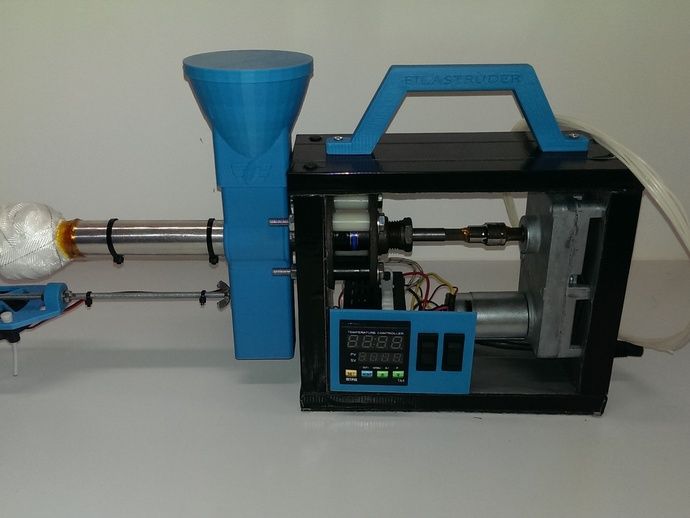
Each carbon fiber consists of hundreds and thousands of micron-diameter filaments, and there can be from 1,000 to 24,000 such filaments in one fiber. Traditional composites are made by impregnating this fiber with a thermoplastic that has a low viscosity in the uncured state so that the binder easily penetrates and spreads between the filaments by capillary action. But the disadvantage of thermoplastic is that it hardens once and cannot be melted for subsequent printing. Therefore, 3D printers use thermoplastics, which melt when heated and solidify when cooled. But their significant drawback is the viscosity, which does not allow penetration between the fibers.
According to Antonov, the solution was found almost by accident. Together with the current technical director Andrey Azarov, who works part-time at TsNIISM, they revived unclaimed technology and equipment for creating impregnation coatings for carbon fiber. “We took some of this fiber and tried it in our technology - the result exceeded all our expectations.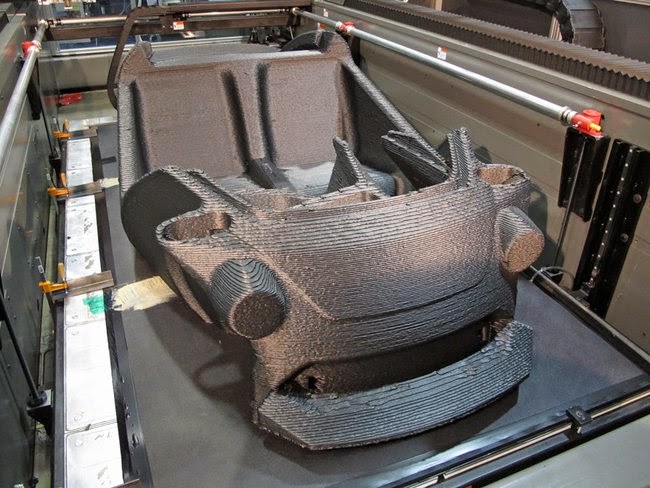 Now, we are working together on a new generation of impregnation. It is this impregnation that ensures the solidity of the composite, the adhesion of the fiber to the plastic, and a number of other unique properties. Thus, our material is three-component. A special impregnation holds the threads together inside the fiber, and the plastic glues these bundles together,” explains Antonov.
Now, we are working together on a new generation of impregnation. It is this impregnation that ensures the solidity of the composite, the adhesion of the fiber to the plastic, and a number of other unique properties. Thus, our material is three-component. A special impregnation holds the threads together inside the fiber, and the plastic glues these bundles together,” explains Antonov.
Andrey Azarov. Photo: TASS
He also emphasized that high strength and rigidity are ensured (as in all composites) due to the absence of pores, strong connection of the components to each other, and a high percentage of reinforcing fibers in the composite. At present, the volume fraction of fibers in the material used by Anisoprint is 25–30%, while in traditional structural carbon fiber it reaches 40–60%. Increasing the volume fraction by another 10 percent will double the strength of the material.
Fruitful cooperation
At the beginning of November 2015, at the Open Innovations exhibition, Anisoprint showed the most durable material known for 3D printing of composites. Fyodor Antonov and Andrey Azarov demonstrated how to print a carbon-fiber lattice stabilizer for an ultralight rocket, which is currently being developed by the domestic company Lin Industrial, also a Skolkovo resident.
Fyodor Antonov and Andrey Azarov demonstrated how to print a carbon-fiber lattice stabilizer for an ultralight rocket, which is currently being developed by the domestic company Lin Industrial, also a Skolkovo resident.
“In addition to Lin Industrial, we cooperate with the Zdravprint company, which manufactures orthoses and fixators,” Fedor Antonov explains. — Together with the Skolkovo partner Dauria-Aerospace [ a pioneer of private cosmonautics in Russia - approx. rev .] we design a space telescope frame for manufacturing according to our technology. And for the guys from the Snitch project, we will print the body of a selfie drone.”
In addition, Anisoprint is negotiating with NPO Tekhnomash on the use of its own technology for the manufacture of elements of the Advanced Manned Transport System developed by RSC Energia, and with Rostec on the use of a printer for printing parts for unmanned aerial vehicles.
Prusa i3 Steel 3D printer with Anisoprint printhead. Photo: Anisoprint
Photo: Anisoprint
The development of a print head for an industrial 3D printer is rightfully considered one of the unconditional successes of the company. “Together with American partners, we are developing a plant for the manufacture of aircraft interior elements, such as tubes, fittings, brackets made of non-combustible plastic. The work is carried out in the interests of the Airbus concern. Right now we are launching our print head at them,” comments the general director of Anisoprint, commenting on the development of international cooperation.
At the end of the story, Fedor Antonov shared the company's plans for the future: “The idea of manufacturing three-layer panels of variable surface density and stiffness seems to be potentially very interesting to us. Such panels (honeycomb panels) are actively used in aviation and space. Here we have a few ideas that we want to patent.”
The Skolkovo Foundation highly appreciates the achievements and potential of Anisoprint. Evgeny Molchanov, project manager of the Fund's Nuclear, New Industrial Technologies and Materials Cluster, shared his observations on the startup's growth. According to him, a successful start, first of all, is due to the full dedication of the Anisoprint startup team, aimed at results. “I have known the participants since the beginning of the commercialization phase, and the tenacity with which this company is created as an independent business unit allows me to conclude that global success will not be long in coming. The Anisoprint startup is becoming an example of successful technology entrepreneurship and inspires many Russians to engage in innovative business aimed at international markets,” Molchanov emphasized.
Evgeny Molchanov, project manager of the Fund's Nuclear, New Industrial Technologies and Materials Cluster, shared his observations on the startup's growth. According to him, a successful start, first of all, is due to the full dedication of the Anisoprint startup team, aimed at results. “I have known the participants since the beginning of the commercialization phase, and the tenacity with which this company is created as an independent business unit allows me to conclude that global success will not be long in coming. The Anisoprint startup is becoming an example of successful technology entrepreneurship and inspires many Russians to engage in innovative business aimed at international markets,” Molchanov emphasized.
At the same time, the company has a lot of room to grow, and before creating a serious industry player, there is a long way to go, which will require professional support, a representative of the Skolkovo Foundation believes. “Investments and protection of intellectual property will be required.